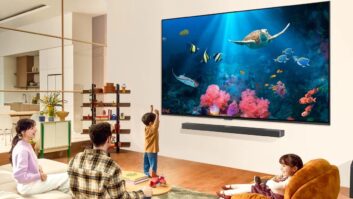No. 2 majaps retailer Lowe’s Companies has embarked on an aggressive, $1 billion build-out in the hotly contested New York metro area market that will add more than 60 stores to its roster over the next several years.
The move will put additional pressure on No. 1 appliance player Sears, which is believed to be losing market share to the home improvement channel, as well as on local majap powerhouse P.C. Richard & Son, the nation’s fifth largest white goods merchant.
According to Lowe’s chairman/CEO Robert Tillman, the expansion is designed to build on the chain’s initial success in the Big Apple area. “Our New York City metro area expansion is based on the success of Lowe’s in metro markets across the country and our initial success in the New York/New Jersey region.”
“Currently,” he continued, “the company’s highest volume stores are in metropolitan markets. Our experience shows that metro markets are ripe for Lowe’s store concept and our strategy of providing top brands and services at competitive prices.”
The New York rollout is part of Lowe’s overall expansion plan to create “a major presence in the Northeast” over the next several years, the company said. Lowe’s is in the midst of what it describes as “the most aggressive expansion plan” in its 56-year history, entailing 253 store openings this year and next.
Much of the growth is focused on the largest markets in the United States, with populations of 500,000 or more. Larger markets made up about 65 percent of Lowe’s expansion this year and last.
Analysts believe that Sears, which reported declines in its core home appliance business in August, is being squeezed by Lowe’s and The Home Depot. The latter, which plans to have front-of-store appliance departments in almost half its 1,300 stores by year’s end, saw its majaps sales soar 35 percent in the second quarter.
Also chipping away at Sears’ majap hegemony, at least according to buying groups, are independent dealers, whose consortiums are reporting slow but steady gains in white goods market share.
The market share shifts are also impacting No. 3 appliance retailer Best Buy, which is casting about for a new white goods strategy amid mid single-digit declines in the second quarter. Chairman/CEO Brad Anderson, speaking last month at a Goldman Sachs retailing conference, conceded that recent department fixes in the areas of distribution, inventory and assortment haven’t worked, and described the category as disappointing.













